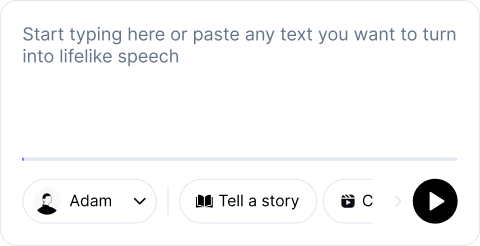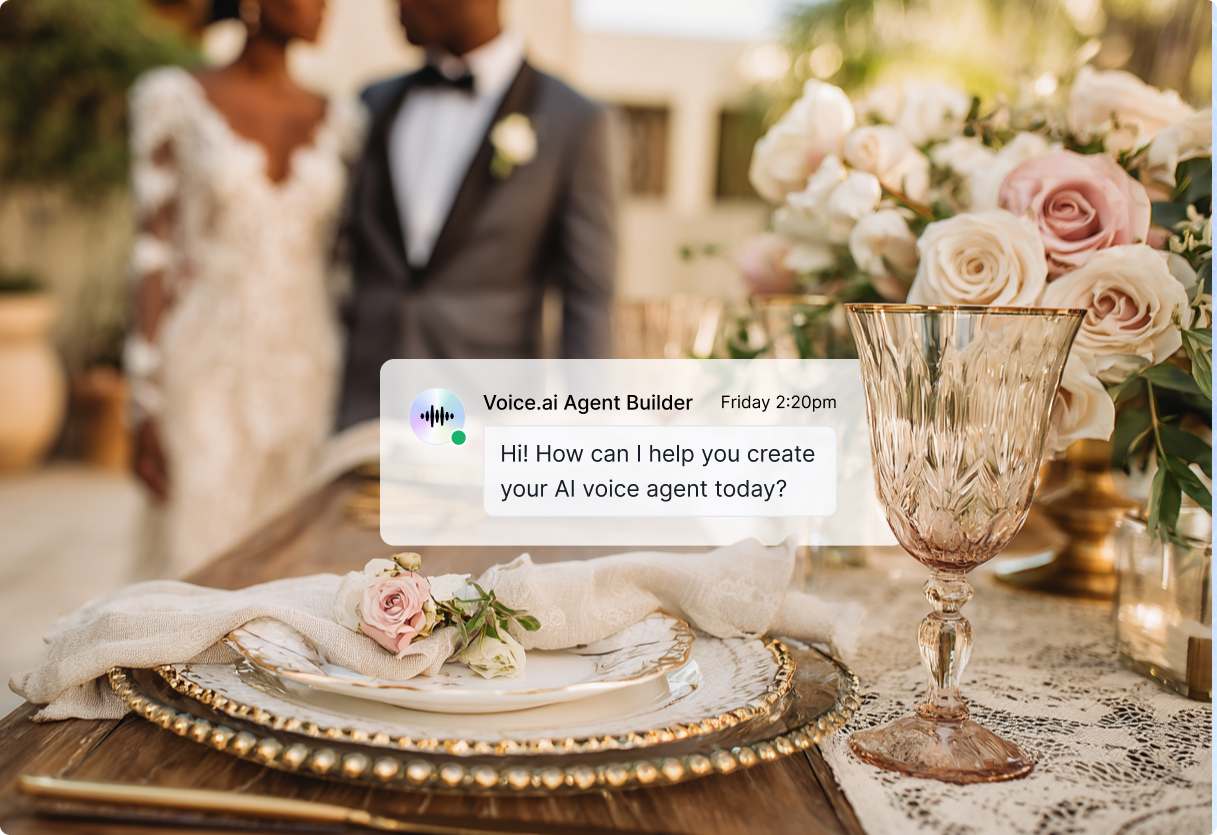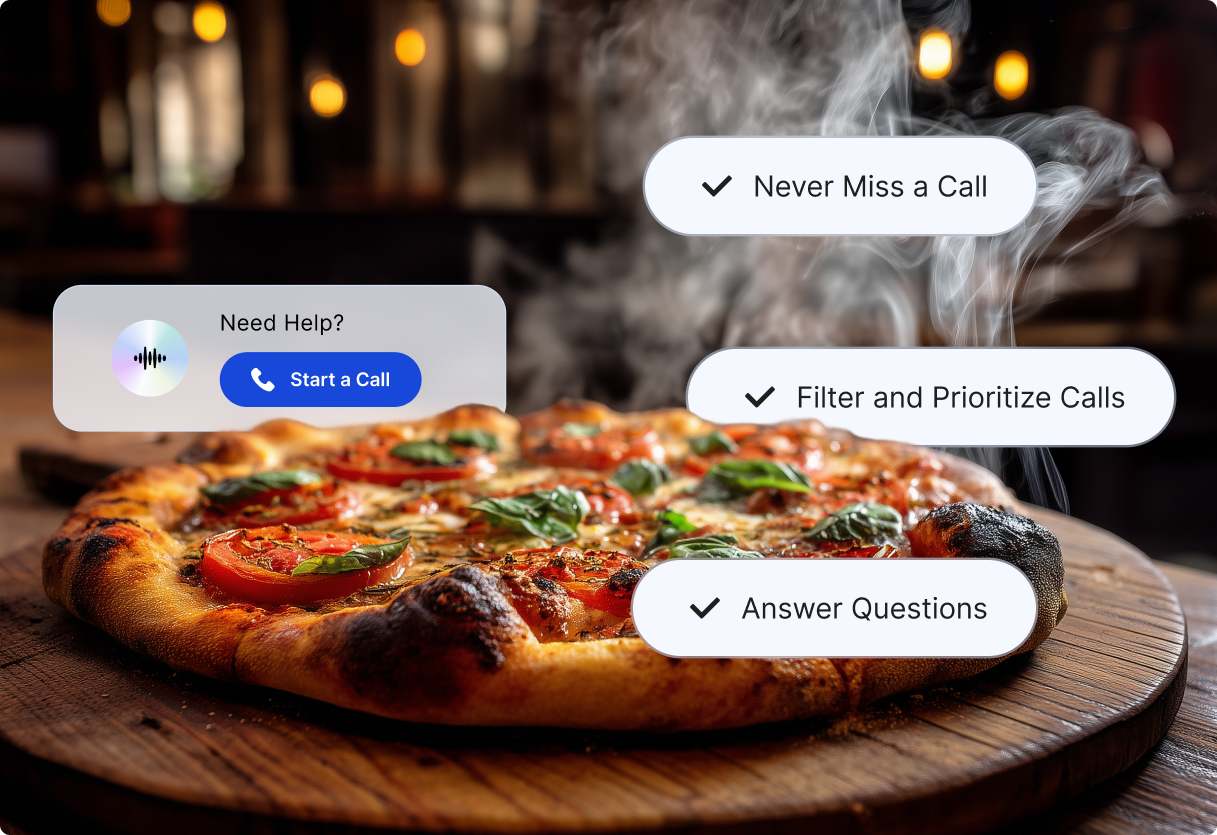Customer service can be a real drag both for the customer and the business handling the support requests. While customers want quick answers to their questions, support teams want to resolve issues swiftly, too. Unfortunately, traditional support channels like email and telephone can be excruciatingly slow, often leaving both customers and agents frustrated. Luckily, artificial intelligence—especially conversational AI paired with the best text to speech technologies—can help you turn this daunting task into a seamless, even enjoyable, process. This blog will explore the top conversational AI companies to help you find the right partner to automate and scale your customer interactions.
Voice AI’s text-to-speech tool is a handy resource for achieving these goals, allowing you to create lifelike speech for your voice assistants.
What is Conversational AI?

Conversational AI refers to technologies that enable machines to simulate human-like conversations using natural language processing (NLP) and machine learning. It helps automate routine support, deliver personalized experiences, and reduce operational overhead. Unlike simple chatbots, conversational AI understands:
- Context
- Sentiment
- Intent
How Does Conversational AI Work?
Conversational AI operates through a sophisticated workflow that transforms human inputs into meaningful responses. Understanding this process helps businesses evaluate platforms more effectively.
The Conversational AI Workflow
Input Processing
When a user interacts with a conversational AI system (through text or voice), the input is captured and preprocessed. This involves:
- Cleaning the text
- Correcting spelling errors
- Standardizing formats
Natural Language Understanding (NLU)
The system analyzes the preprocessed input to determine intent (what the user wants to accomplish) and extract entities (specific pieces of information like:
- Dates
- Names
- Locations
Context Management
The system maintains the conversation history and relevant contextual information to ensure responses are appropriate to the ongoing dialogue rather than treating each interaction in isolation.
Knowledge Base Integration
The AI connects to various data sources like knowledge bases, APIs, CRMs, and other business systems to retrieve the information needed to fulfill the user’s request.
Response Generation
Using natural language generation (NLG) technologies, the system formulates a coherent and contextually appropriate response based on the understood intent and retrieved information.
Delivery & Channels
The response is delivered back to the user through the appropriate channel (chat interface, voice response, email, etc.).
Learning and Improvement
The system records interactions and outcomes, using this data to improve future responses through continuous learning.
What are Enterprise Conversational AI Platforms?
Gartner defines the enterprise conversational AI platform market as the market for software platforms used to build, orchestrate, and maintain multiple use cases and modalities of conversational automation. The enterprise conversational AI platform consists of:
A capability layer providing runtime capabilities that include:
- Natural language understanding (NLU)
- Dialogue management
- Channel integration
- Back-end integration
- Access control for platform users
- Life cycle management
A tooling layer geared toward business users that includes:
- A no-code environment for building and maintaining applications
- Analytic tools for understanding dialogue flows
- NLU intent and entity tuning tools
- A/B flow testing tools
How is Conversational AI Different from Chatbots?
AI-powered chatbots rely solely on predefined rules or predetermined responses, while conversational AI is powered by more advanced algorithms that enable it to understand the user’s intent and context. Chatbot personalization may be limited and based on user profiles or already defined data, but it is frequently simplistic and lacking in sophistication.
Advanced Personalization
By learning from user interactions and customizing responses based on user preferences and behavior, conversational AI systems can provide advanced personalization. Conversations become more relevant and engaging as a result. Chatbots are typically used for more basic tasks such as providing information or FAQs, while conversational AI is more suitable for complex tasks such as:
- Customer support
- Sales
Input Modalities and Learning Capabilities
Chatbots are often limited to text-based conversations, while conversational AI is capable of understanding and responding to input from various sources, including:
- Voice
- Text
- Images
Chatbots can be scripted and do not require any machine learning, while conversational AI requires advanced machine learning algorithms.
Task Complexity and Conversational Sophistication
Chatbots are typically used for simpler tasks and are less conversational, while conversational AI is designed to provide more sophisticated conversations and can handle complex tasks. Conversational AI offers natural discussions between people and computer systems by utilizing cutting-edge speech recognition and cognitive response systems.
It can be integrated into IVR, voice-led communication channels, messaging platforms, mobile apps, and several other channels.
Use Cases for Conversational AI Solutions
Businesses and individuals alike are finding many uses for conversational AI solutions. Here are just a few of the top use cases developed so far:
Personal assistants
Many people use personal AI assistants like Alexa, Siri, or Google Assistant to manage everyday tasks like scheduling, sending messages, or managing household devices.
Customer service
Some businesses have experienced increased customer satisfaction after integrating conversational AI into their customer service pipeline. Conversational AI agents streamline rote tasks and significantly reduce wait times.
Marketing and sales
Conversational shopping assistants help customers, tailoring their marketing strategies to each customer’s preferences. They also help businesses gather and analyze data for more informed decision-making.
Human resources
Conversational AI assistants can answer simple employee questions quickly, which streamlines onboarding, training, and rote day-to-day tasks. They can also prioritize issues as they come up to facilitate better workflows.
Financial services
Banking and other financial companies use conversational AI to make their services more accessible and secure, identify fraud, and offer personalized financial advice.
Social media
Conversational AI assistants can interact with social media users directly, analyze data and interactions, and provide personalized ads or content.
Related Reading
- How to Use AI in Sales
- AI in Hospitality Industry
- How to Create an AI Agent
- AI for Insurance Agents
- Conversational AI in Healthcare
- Conversational AI for Customer Service
- AI for Real Estate Agents
- AI for Customer Service
- Conversational AI Examples
30+ Leading Conversational AI Companies
1. Voice AI: Human-Like Voiceovers At Scale

Voice AI’s text-to-speech tool delivers lifelike voiceovers for videos, podcasts, games, and more. Users can choose from a library of sound-alike AI voices to generate speech that sounds real. The tool even supports multiple languages to help creators go global.
Why it stands out: Voice AI leads the pack with its ultra-realistic, emotionally expressive text-to-speech engine—perfect for creators, developers, and educators who want professional-quality audio without robotic tones or time-consuming recording sessions.
Key Features
- Human-like AI voices with emotional range and personality.
- Wide language and accent support for global use.
- Fast, high-quality voiceover generation for videos, apps, e-learning, and more.
- Intuitive interface and free-to-try option.
- Ideal for content creators, devs, marketers, and educators.
Why Choose Voice AI?
Why choose Voice AI: Whether you’re narrating YouTube videos, building conversational agents, or designing e-learning content, Voice AI gives you lifelike speech that connects with audiences—no studio needed.
Try our text-to-speech tool for free today and hear the difference quality makes.
2. Sprinklr: Customer Service Chatbots on Steroids
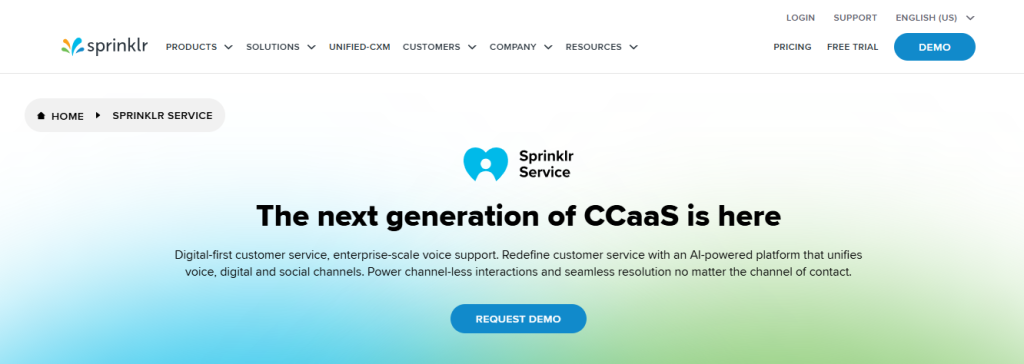
Sprinklr’s conversational AI platform revolutionizes customer service by enabling seamless self-service through advanced chat and voice bots designed for intricate customer service scenarios, significantly reducing reliance on human agents.
With standout features like conversational analytics and generative AI integration, it not only empowers customers to resolve issues swiftly but also humanizes the bot experience with quick, personalized responses.
Omnichannel Customer Experience
Sprinklr reduces wait times and enhances overall satisfaction, embracing an omnichannel and multilingual approach to ensure a consistent brand experience across diverse channels. Intelligent handling of out-of-context queries, in-platform testing, and contextual conversations further enhance customer journeys, setting Sprinklr apart as a frontrunner in the conversational AI landscape.
3. IBM: Enterprise Conversational AI With Watson
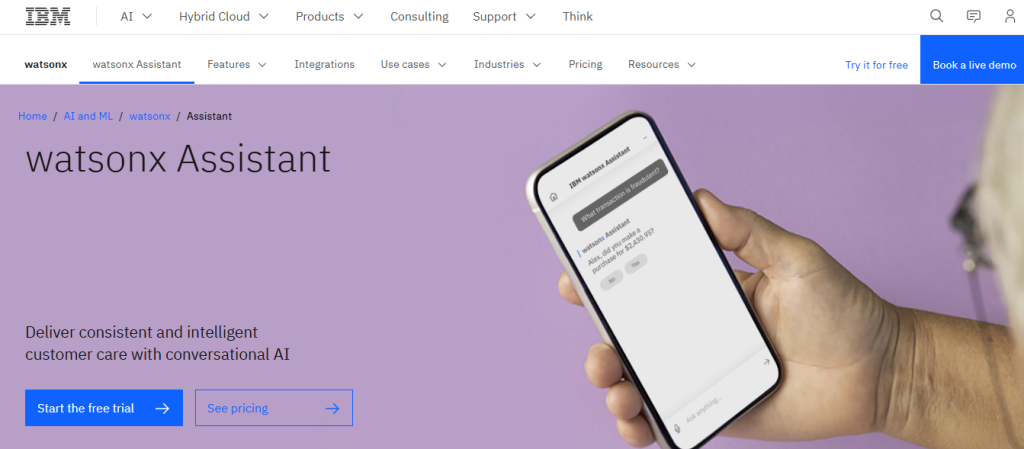
IBM watsonx Assistant is a good choice for enterprises that want:
- Strong control
- Reliability
- Scale
IBM’s No-Code Chat and Voice Assistants
IBM lets teams build chat and voice assistants without writing code, ideal for automating customer self-service across channels. You can deploy IBM’s out-of-the-box Granite LLMs or bring your models via watsonx.ai. It’s purpose-built for business users, with a no-code interface and enterprise-grade customization to match.
4. Amelia: A Conversational AI Platform Built for Business
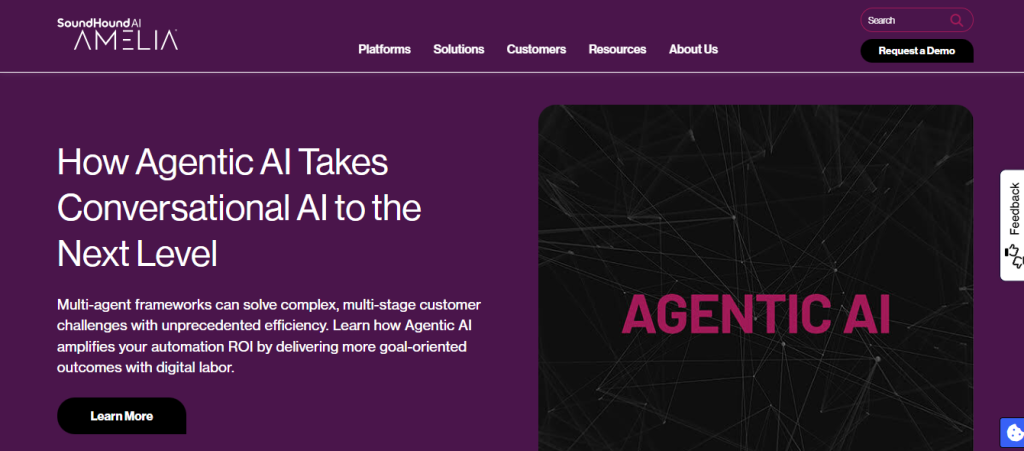
Amelia helps you build and manage conversational AI agents that can handle full-service interactions across customer and employee workflows. It supports end-to-end automation, enabling AI agents to provide immediate responses and complete tasks without human intervention.
Used by big organizations, Amelia supports high-volume, complex queries in both customer-facing and internal operations.
5. Cognigy: Enterprise-Grade Virtual Agents
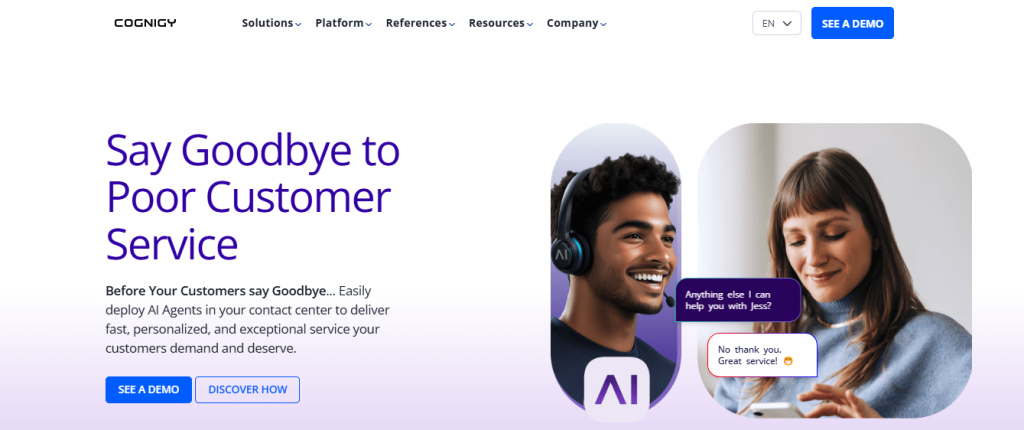
Cognigy is designed to power enterprise-grade virtual agents that work across channels, languages, and use cases. Its AI agents combine generative and conversational AI to deliver real-time support, smart self-service, and intelligent IVR–while also assisting human agents with context and next-best actions.
Pretrained skills and deep integrations with enterprise systems make deployment faster, while built-in learning capabilities help the platform continuously adapt to your business needs.
6. Avaamo: Advanced Conversational AI for Complex Use Cases
Avaamo is an enterprise-focused AI platform built to handle complex interactions across industries. It supports advanced technologies like neural networks and speech synthesis, while offering a no-code dialog builder that lets teams design intelligent, efficient conversations without engineering effort.
Avaamo’s flexibility makes it a fit for varied enterprise use cases, from voice to chat. With features such as pre-built connectors, conversation analytics, and conversational validators, it accelerates development cycles, transforming ideas into powerful applications within weeks.
Accelerating Conversational AI Value
This comprehensive solution significantly reduces the traditional time-to-value timeline, making Avaamo an appealing choice for organizations seeking streamlined and enhanced conversational AI across various contexts and industries.
7. Google Cloud Dialogflow: Conversational AI for Dynamic Interactions
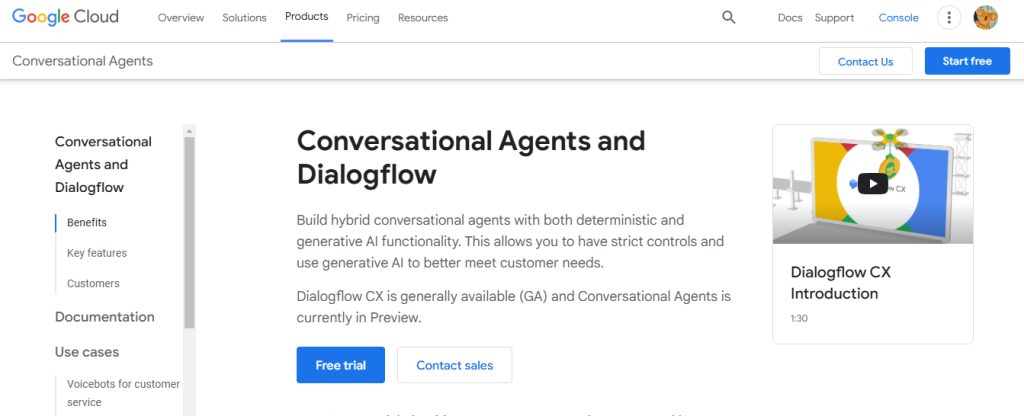
Google Cloud Dialogflow, formerly Api.ai, represents a cutting-edge chatbot-building tool that is tailored to offer users innovative and engaging ways to interact with digital products. Dialogflow stands as a powerhouse in constructing voice and text-based conversational interfaces driven by the prowess of artificial intelligence.
Powering Diverse Applications
Acquired by Google in 2019, Dialogflow brings the technological might of one of the world’s tech giants to the forefront of chatbot development. With a focus on seamless integration of AI, Dialogflow is enabling developers to craft dynamic, responsive, and intuitive conversational interfaces for a diverse range of applications and industries.
8. Yellow.ai: Conversational AI for Customer Experience and Beyond
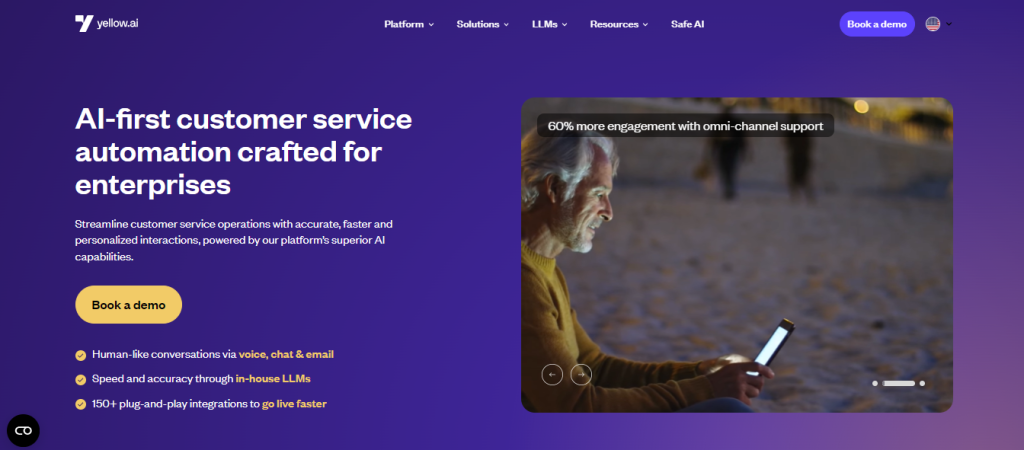
Yellow.ai is an AI-powered platform built for enterprises looking to automate customer support at scale with conversational bots. It enables resolution-focused conversations across channels and languages, while also extending automation to functions like:
- Marketing
- Sales
- Internal support
9. Amazon Lex: Build Conversational AI on AWS
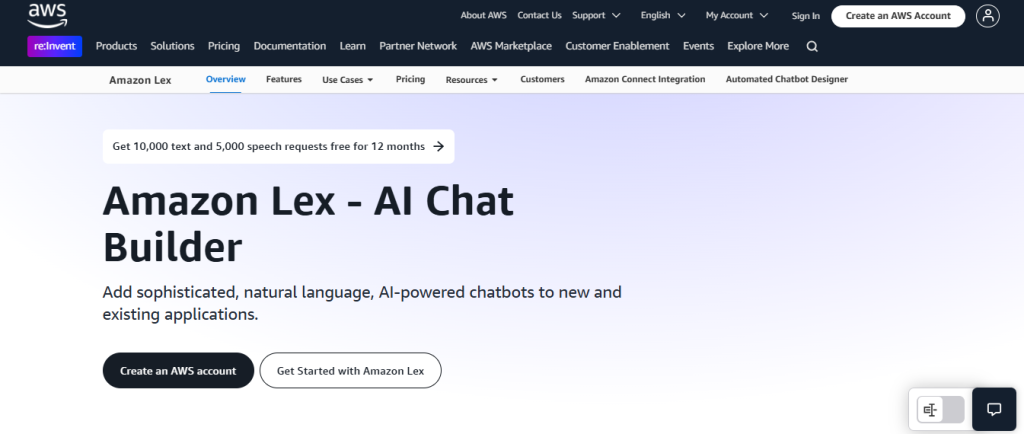
Amazon Lex extends Amazon’s expertise to businesses, empowering them with conversational bots. Integration with AWS services is seamless, but it’s optimal for companies deeply invested in the Amazon ecosystem.
Deep Learning for Conversational AI
With advanced deep learning functionalities, it encompasses Automatic Speech Recognition (ASR) for speech-to-text conversion and Natural Language Understanding (NLU) to interpret input. By bringing the same deep learning technologies behind Alexa to developers, Amazon Lex facilitates the swift creation of sophisticated, natural language-driven chatbots, enabling lifelike conversational interactions.
10. OneReach.ai: A No-Code Platform for Conversational AI
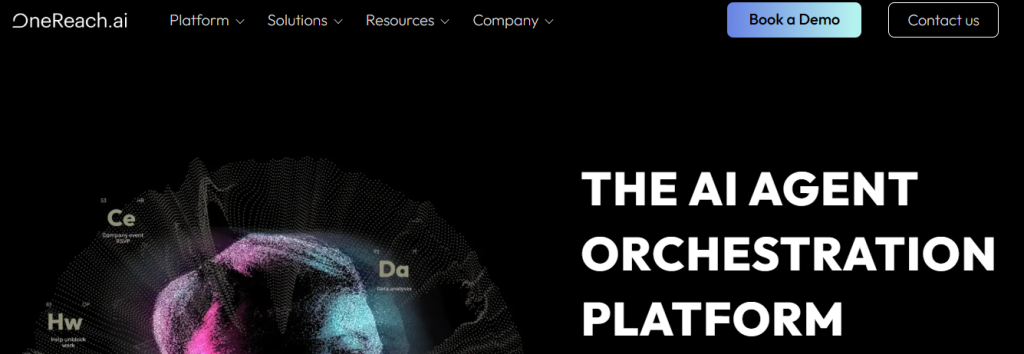
OneReach.ai is a low-code platform built to support large-scale automation through AI-powered digital workers. Developed initially as an R&D initiative, it focuses on enabling hyperautomation by combining communication logic with backend orchestration. Generative Studio X by OneReach.ai helps organizations design intelligent agents that can:
- Carry out tasks
- Standardize interactions
- Coordinate across systems without manual input
11. LivePerson: Automated Customer Engagement Across Messaging Channels
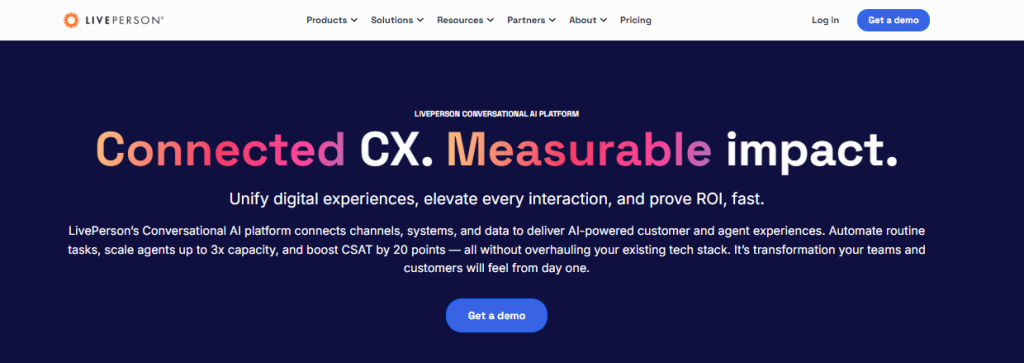
LivePerson is an enterprise platform for managing and automating customer conversations across messaging channels. Large organizations use it to:
- Coordinate interactions across teams and systems.
- Support agents with AI-driven tools.
- Shift more customer service from voice to digital.
12. Verint: Low-Code Conversational AI for Customer Engagement
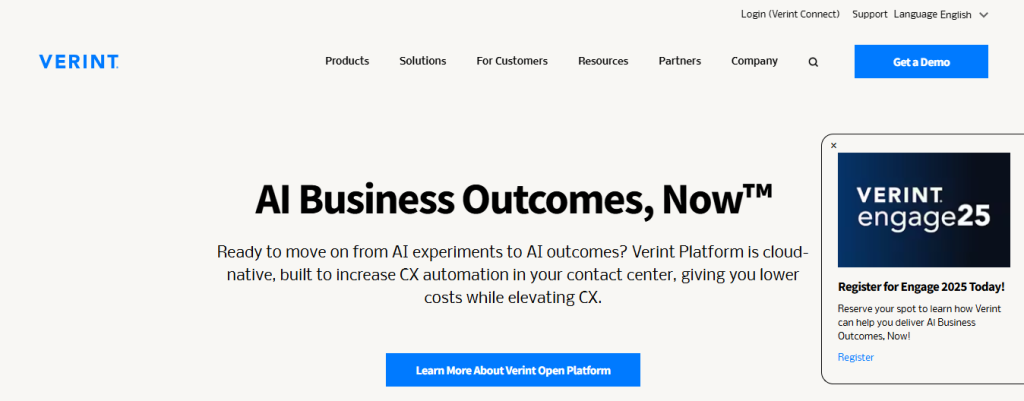
Verint is a low-code platform designed to automate customer interactions across voice and digital channels. It enables organizations to deploy AI-powered virtual assistants that handle tasks such as:
- Booking appointments
- Processing payments
- Providing product information
The platform includes tools for designing, training, testing, and managing multilingual virtual assistants, allowing for rapid deployment and scalability.
13. Tavus API: Create Conversational AI Video Agents

Tavus API allows developers to integrate conversational AI video generation tools in their apps. Tavus’ Phoenix-2 model allows end users to create high-quality, lifelike digital replicas they can use to generate unlimited AI videos to help scale their growth. With Tavus’ Conversational Video Interface (CVI), end users can create AI agents that speak, see, and hear.
CVI-generated agents can respond to user input in as little as 600 ms, giving their interactions a human feel. End users can use Tavus to:
- Build conversational customer service chatbots.
- Create interactive human resources videos.
- Provide personalized sales recommendations.
Give your users access to amazingly lifelike conversational video with Tavus API, and check out just how easy implementation is with the developer-first platform.
14. Wotnot: Simplifying the Chatbot Creation Process

Wotnot is a conversational AI solution for chatbot generation and implementation. Users can choose to build their chatbot on the platform, use Wotnot’s no-code interface, or have the company’s specialists create one for them.
15. Dialpad: Conversational AI for Customer Service
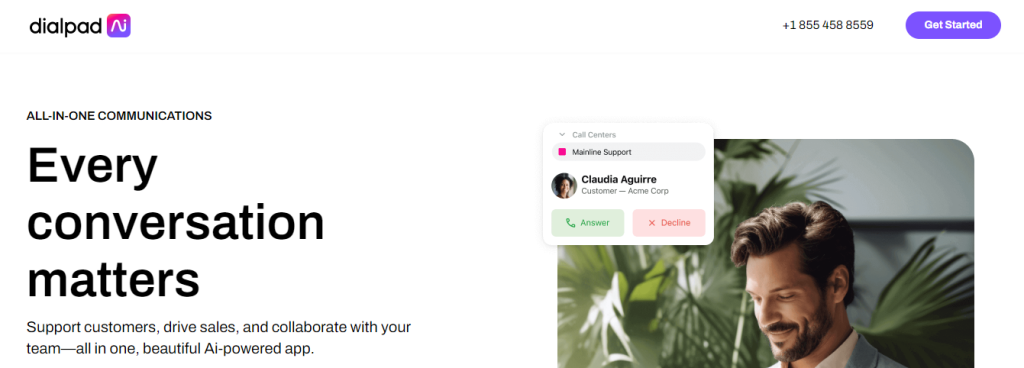
Dialpad is a conversational AI solution offering chatbots for automated customer service. The platform provides a no-coding-required chatbot builder for end users and ongoing machine learning to improve customer experience.
16. Boost.ai: A No-Code Virtual Agent Platform

Boost.ai is an artificial intelligence solution platform offering conversational AI, chat or voice call automation, and generative AI. Their conversational AI product is a no-code virtual agent platform.
17. Alltius: Conversational AI for Financial Services
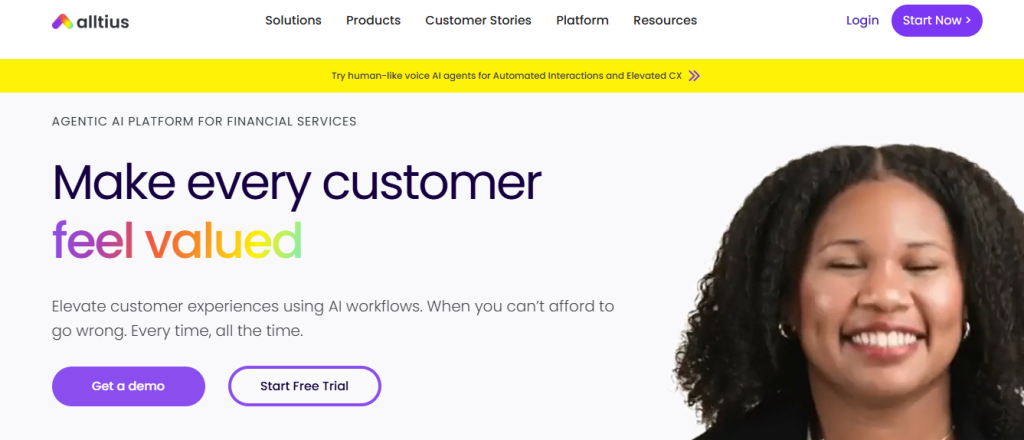
Alltius is a conversational AI customer service solution designed for financial services. It offers Support Agent Assist, In-Product Assist, Sales Rep Assist, and Website Assist products.
18. Pandorabots: Build Conversational AI with AIML

Pandorabots is an artificial intelligence solution offering conversational AI agents and animated chatbot avatars. They also provide a free Udemy course on building complex conversational agents using the Artificial Intelligence Markup Language (AIML) open standard.
19. Kore.ai: Conversational AI for Work, Process, and Service Applications
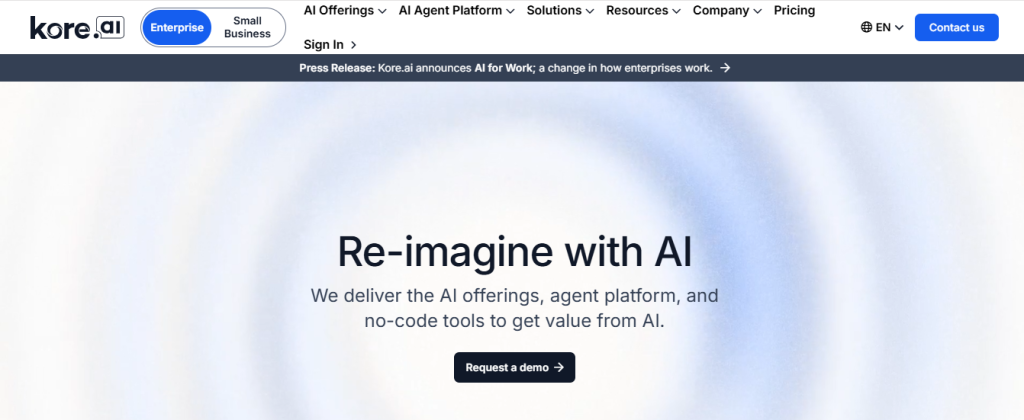
Kore.ai is a conversational AI platform offering AI solutions for applications like:
- Work
- Process
- Service
20. Rulai: A Conversational AI Platform for Business
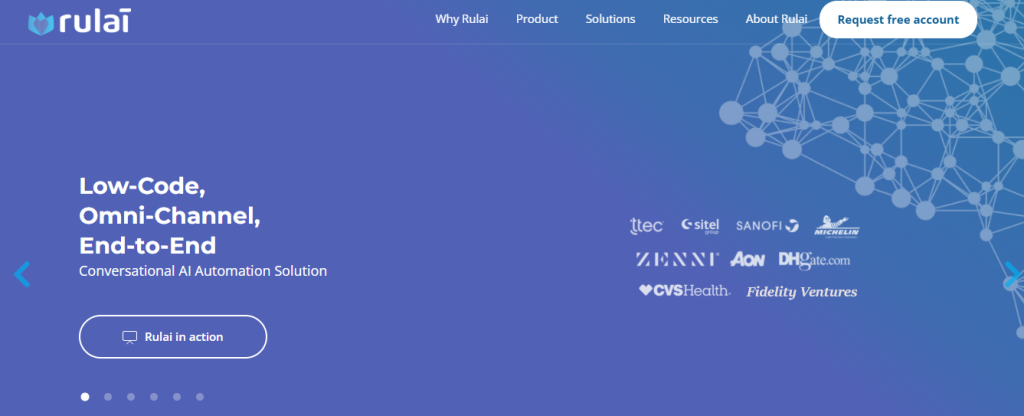
Rulai is a conversational AI platform offering virtual assistants for:
- Contact centers
- Finance
- Insurance
- Retail
- Healthcare and more
21.Rezolve.ai: Generative AI for Employee Support
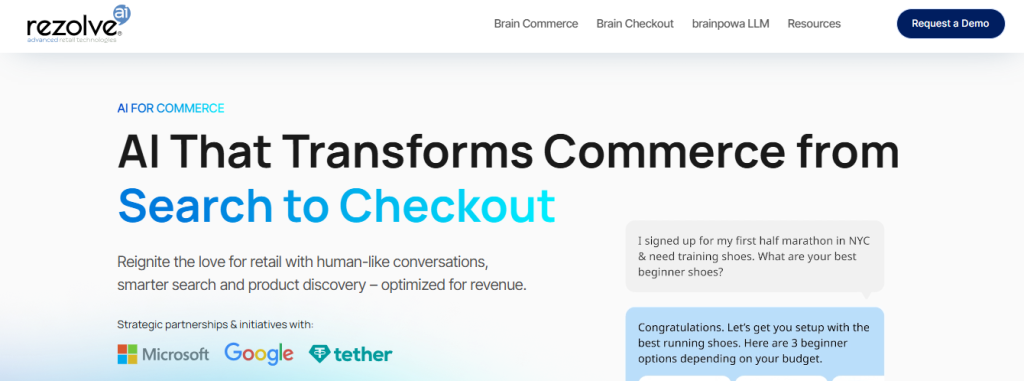
Rezolve.ai is a Generative AI-powered modern service desk that integrates with collaborative platforms like Microsoft Teams to provide comprehensive support to employees. It offers contextual and personalized employee support via its conversational ChatGPT-like AI chatbot, delivering help in seconds and driving high levels of self-service and auto-resolution with reduced service costs using Generative AI and Machine Learning.
22. Verloop.io: Customer Support Automation

Verloop.io is a leading customer support automation platform that enables companies to provide excellent customer service through various channels, including:
- Voice
- The Web
- In-app
It supports automation in:
- Retail
- E-commerce
- BFSI
- Education
- Logistics
- OTA sectors
23. Leena.ai: Conversational AI for HR
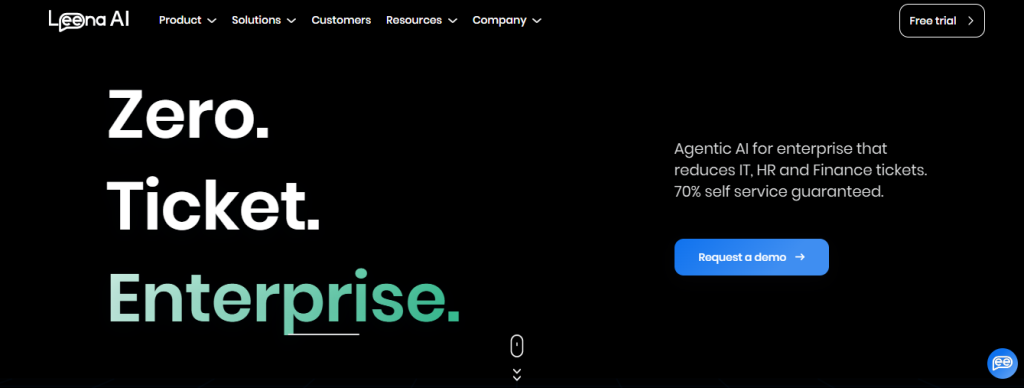
Leena.ai helps enterprises build exceptional employee experiences via an AI-enabled conversational platform. It automatically:
- Answers employee queries
- Streamlines day-to-day HR operations
- Quickly resolves employee tickets
- Manages requests on the go
24. Haptik.ai: Multichannel, Multilingual Conversational AI
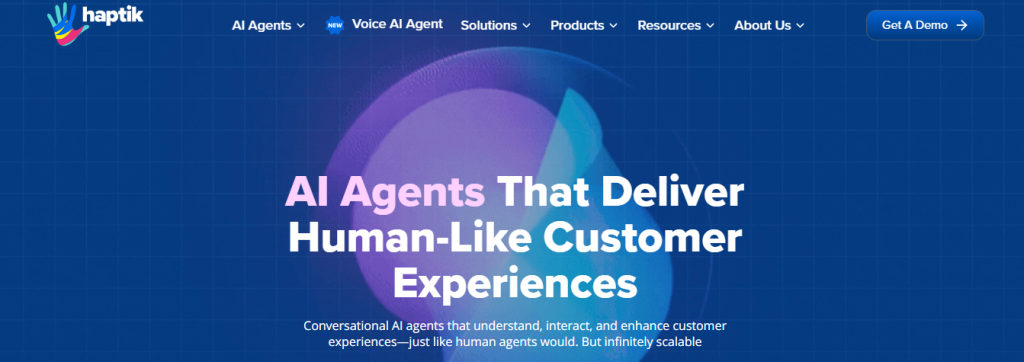
Haptik.ai provides AI-driven, personalized, conversational experiences across 20 channels and 100+ languages.
It serves clients like:
- KFC
- Whirlpool
- Starhub
- HP
- Reliance Jio and more
25. Zendesk: Customer Service Software with a Conversational AI Bot

Zendesk is a service-first business that creates software to:
- Satisfy client needs
- Maintain business continuity
- Boost team productivity
Zendesk’s Answer Bot uses AI to respond to frequent customer questions from multiple channels at once and can transfer conversations to live agents when necessary.
26. Aisera: Proactive AI for Service Automation
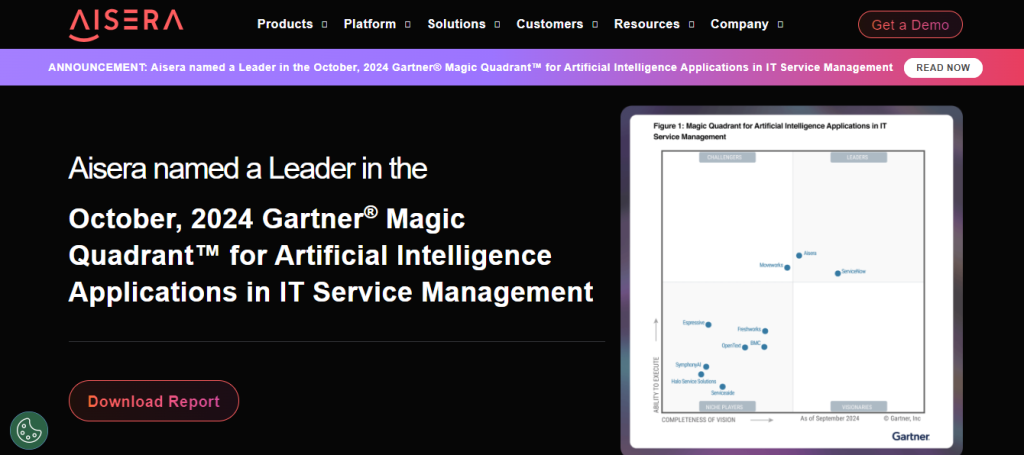
Aisera provides proactive, personalized, and predictive AI-powered experience solutions that automate operations of:
- HR
- IT
- Sales
- Customer service
It uses user and service behavioral intelligence to drive end-to-end automation of tasks and business processes.
27. Gridspace: Voice AI for Contact Centers

Gridspace offers two central voice AI applications: a transcription & conversational analytics product primed for contact centers, alongside a conversational AI platform.
It differentiates via a primary focus on specific use cases that:
- Drive value
- Targeting cost reduction
- Tangible customer experience outcomes
Supporting this endeavor is an LA-based team comprising talent from Stanford, MIT, and various other institutions, who share fascinating demos and similar content on YouTube.
28. OneReach.ai: A No-Code Platform for Conversational AI
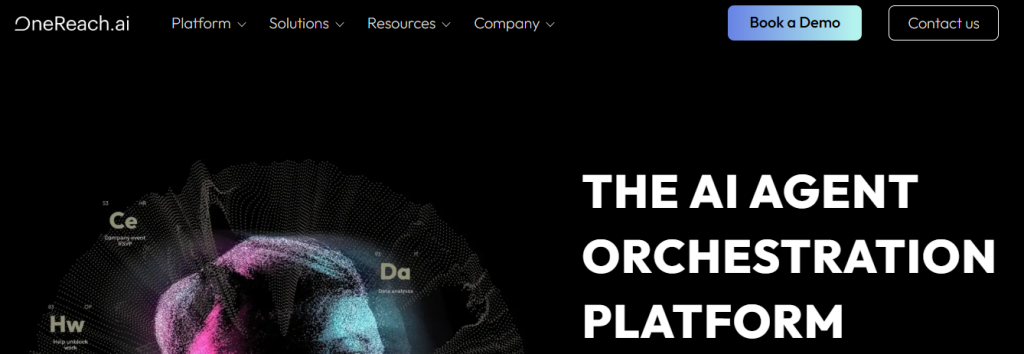
OneReach.ai is another firm that hasn’t strayed from the edge of conversational AI innovation, as it became one of the first industry players to embrace AI agents. Yet, it doesn’t just focus on their design, testing, and deployment; it also offers an orchestrator to support enterprise-wide implementations of the technology.
Composable AI Architecture: Building Smarter, Customisable Conversational Workflows
OneReach.ai offers a composable architecture with a bring-your-own model (BYOM) approach that allows brands to test use cases against the best available model to optimize the performance of AI models. That architecture is also cognitive.
As such, AI agents identify the tools and integrations they need to access so they can complete the requested task. Therefore, OneReach.ai not only saves time with its approach but also helps compose the processes behind use cases so brands can start to experiment with more complex applications of conversational AI.
29. Parloa: Voice AI for Secure and Compliant Workflows

Like OneReach.ai, Parloa has built an AI platform studio with stress on creating tools that help teams orchestrate back-end workflows and improve outputs. It also places significant emphasis on compliance, security, and trust.
Indeed, it ties a deep security offering with its Voice AI Studio for comprehensive oversight and quality assurance (QA). As such, it is often a popular option for enterprises worried about bringing accompanying security operations entirely in-house.
30. ServiceNow: Workflow Automation for IT Services

ServiceNow’s cloud-based workflow automation platform streamlines and automates routine work tasks, increasing operational efficiencies. It includes a comprehensive online database of IT services and key features like:
- Self-service
- Event management
- Workflow automation
- Service catalog
31. Moveworks: Proactive Employee Support Automation
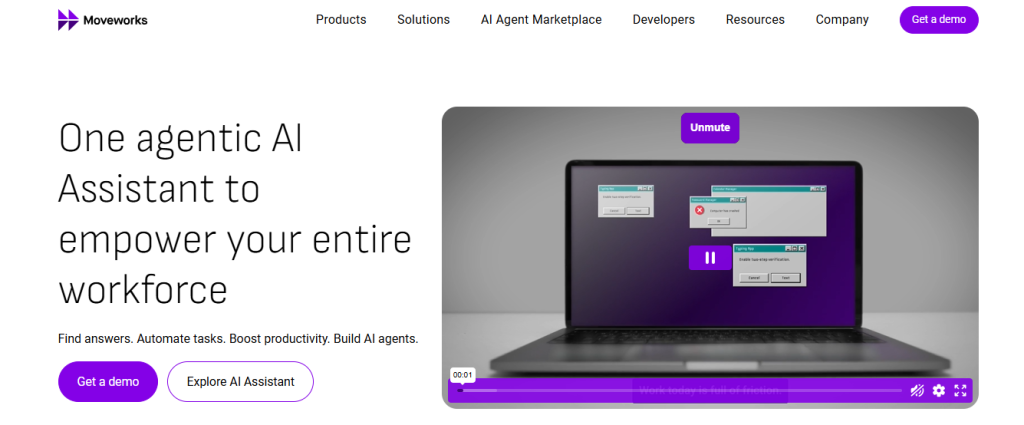
Moveworks is a conversational AI platform that enables leaders to foresee issues and provide assistance to employees quickly. It’s used by companies like Hearst, DocuSign, and Broadcom to streamline support and enhance employee experiences.
32. Rasa: A Flexible Open Source Conversational AI Platform
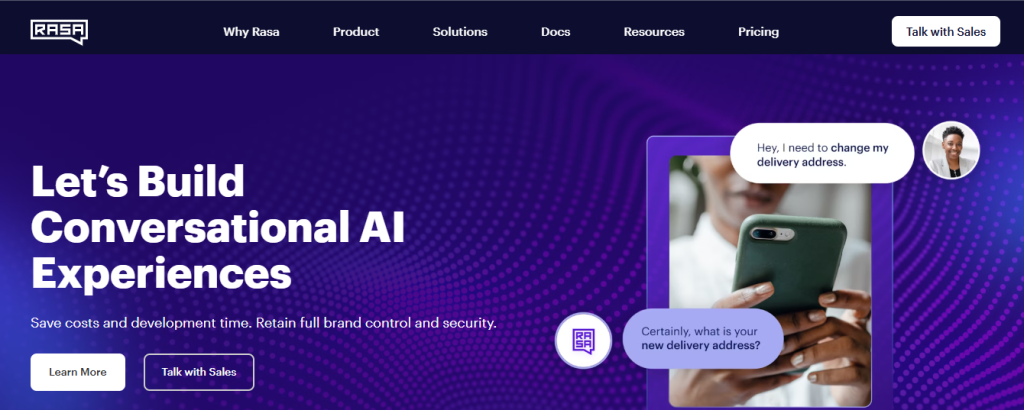
Rasa is a flexible conversational AI platform known for its advanced AI assistant creation and deployment. It emphasizes data privacy and scalability, making it suitable for businesses of all sizes.
Related Reading
- Conversational AI in Insurance
- Conversational AI in Banking
- Conversational AI in Retail
- Conversational AI for Banking
- AI Sales Agents
- Conversational AI IVR
- Voice Ordering for Restaurants
- Conversational AI Design
- Conversational AI for Sales
- Conversational AI Ecommerce
How to Choose the Right Conversational AI Vendor for Your Business
| Parameter | Considerations |
| Multichannel support | Does the conversational AI platform support key communication channels such as web chat, SMS/text, and social media? How seamlessly does the platform integrate with these channels to ensure a consistent user experience across different touchpoints? |
| Natural language processing (NLP) capabilities | To what extent does the platform demonstrate proficiency in NLP based on how accurately it understands a customer query? How well does it handle intent recognition, labeling, and response management in varied and dynamic conversational contexts? |
| Response actions | Are essential response actions available, including designed dialog paths, presentation of knowledge base articles, sending URLs, and launching automation to fulfill requests? |
| Advanced training and learning | Does it offer preloaded training templates, iterative models, supervised learning with human-in-the-loop, intent matching confirmation, and exception processing? How adaptive is the platform in learning from user interactions and improving over time by monitoring user feedback? |
| Real-world effectiveness and reliability | Beyond features, how effective and reliable is the platform in real-world scenarios? Can the company provide transparency into the underlying technology, algorithms, and data sets used for training the conversational AI? What is the platform’s track record in scaling actual deployment, and are there case studies or references to support its reliability and scalability claims? |
| Security and compliance | Does the platform offer enterprise-grade security? Does it comply with global compliance standards? |
Multichannel Support: The Key to Meeting Customers Where They Are
Customers engage with businesses across various channels. Conversational AI tools should meet them where they are for a seamless experience. If someone initiates a conversation via web chat, then switches to social media, your chatbot or virtual assistant should recognize the user and carry the conversation over seamlessly.
Choosing a Conversational AI That Works Across All Your Channels
Support for multiple channels also helps scale your operations as it allows you to deploy AI across various business functions and communication platforms.
When assessing a conversational AI tool, ask:
- Does the platform support key communication channels such as web chat, SMS/text, and social media?
- How seamlessly does it integrate with these channels?
- Can it ensure a consistent user experience across different touchpoints?
Natural Language Processing Capabilities: How Well Does the AI Understand Human Language?
Natural language processing helps machines understand human language. The better a conversational AI platform’s NLP capabilities, the more effective it will be in carrying on humanlike conversations.
When assessing a tool’s NLP capabilities, ask:
- To what extent does the platform demonstrate proficiency in NLP based on how accurately it understands a customer query?
- How well does it handle intent recognition, labeling, and response management in varied and dynamic conversational contexts?
Response Actions: Can the AI Help Me Achieve My Goals?
When customers engage with a conversational AI tool, they expect it to respond to their inquiries. To improve customer satisfaction and achieve business goals, it’s essential to ensure the tool can carry out a variety of tasks.
When assessing response actions, ask: Are essential response actions available, including:
- Designed dialog paths
- Presentation of knowledge base articles
- Sending URLs
- Launching automation to fulfill requests?
Advanced Training and Learning: How Well Does the AI Improve Over Time?
Conversational AI tools can reduce operational costs and improve performance by learning from historical data and user interactions. When speaking to a vendor, ask how adaptive their platform is in learning from user interactions and improving over time by monitoring user feedback.
You should also look for features that support advanced training, including preloaded training templates, iterative models, supervised learning with:
- Human-in-the-loop
- Intent matching confirmation
- Exception processing
Real-World Effectiveness and Reliability: How Does the AI Perform Outside of a Demo?
- Beyond features, how effective and reliable is the platform in real-world scenarios?
- Can the company provide transparency into the underlying technology, algorithms, and data sets used for training the conversational AI?
- What is the platform’s track record in scaling actual deployment, and are there case studies or references to support its reliability and scalability claims?
Security and Compliance: Is the AI Safe to Use?
Before deploying any new business software, it’s crucial to assess its security and compliance capabilities. Ensure the conversational AI tool offers enterprise-grade security and complies with global compliance standards.
Related Reading
- Examples of Conversational AI
- Conversational AI for Finance
- Conversational AI Cold Calling
- Air AI Pricing
- Conversational AI Analytics
- Conversational AI Tools
- Conversational AI Hospitality
- Conversational Agents
- Voice AI Companies
Try our Text-to-Speech Tool for Free Today
Voiceovers are a crucial component of many multimedia projects, from educational videos to podcasts, and they help set the tone and engage your audience. Voice AI can help you create high-quality voiceovers in a fraction of the time it takes to record them yourself. Stop spending hours on voiceovers or settling for robotic-sounding narration.
Voice.ai’s text-to-speech tool delivers natural, human-like voices that capture emotion and personality, perfect for content creators, developers, and educators who need professional audio fast. Choose from our library of AI voices, generate speech in multiple languages, and transform your projects with voiceovers that sound real. Try our text-to-speech tool for free today and hear the difference quality makes.
